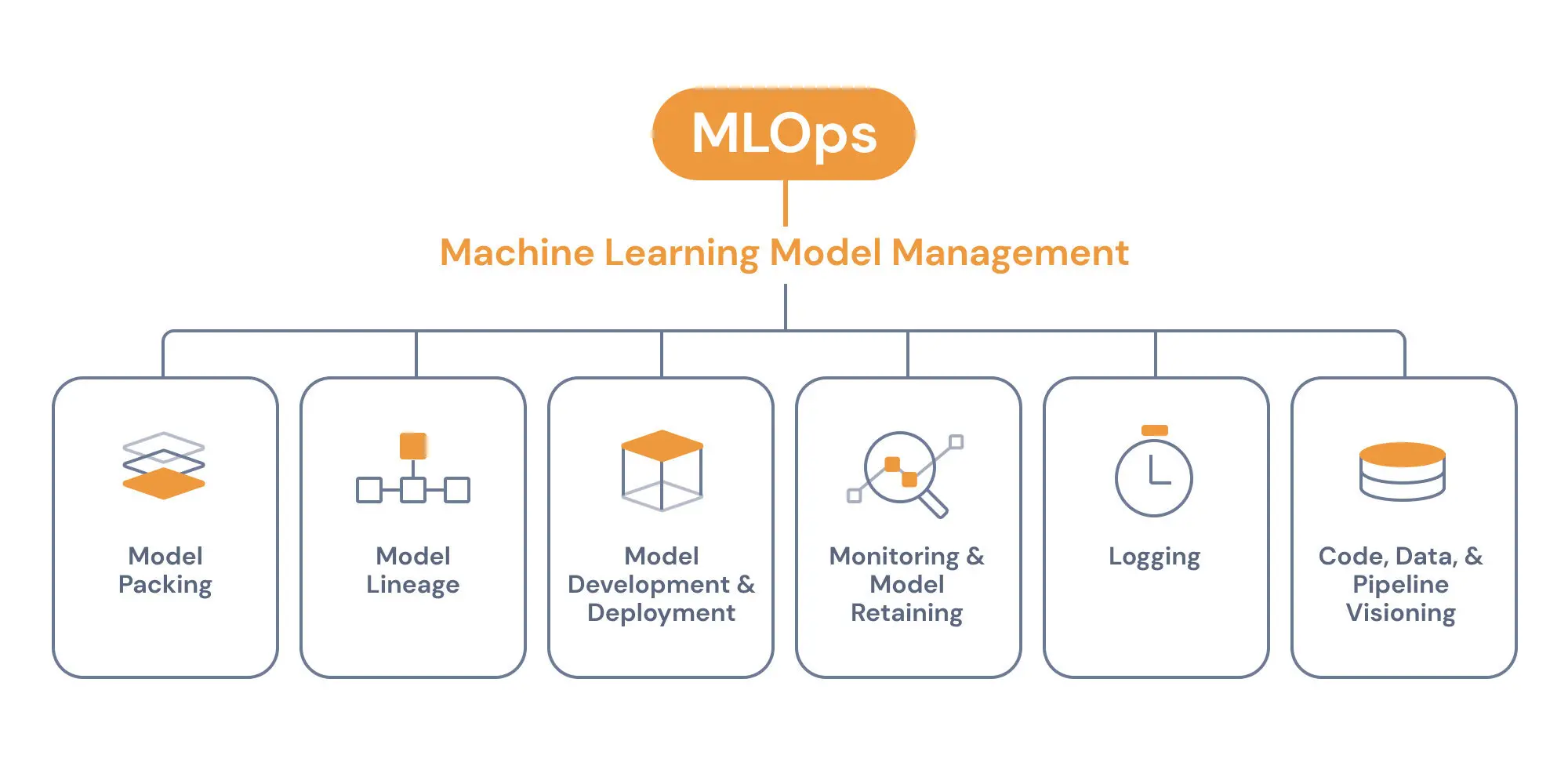Machine Learning Model Management: What It Is, Why You Should Care, and How to Implement It
Machine learning is a division of artificial intelligence and computer science. It focuses on using data and algorithms to make predictions, classifications, and recommendations without being programmed to do so. The more data machine learning is exposed to, the better its accuracy. During development, data scientists experiment with different machine learning models. Finally, they apply machine learning model management to keep track of all the experiments and results.
What is Machine Learning Model Management?

Machine learning model management is responsible for developing, training, and deploying machine learning models. Furthermore, machine learning model management is a vital part of Machine Learning Operations, also known as MLOps.
MLOps increase workflow efficiency to complete tasks. This is done through:
- Collaboration between data scientists
- Automation: Performing repetitive tasks with minimal human input
- Continuous improvement: Integrating new data to evolve and adapt
- Customer-centric action: Understanding customer behavior and patterns to improve experience and engagement
At the same time, data scientists automate and monitor all the steps of the machine learning system through the following principles and best practices: ongoing development, testing, integration, delivery, deployment, monitoring, versioning, and reproducibility. These principles and practices help in the following ways:
- Faster experimentation: Scientists can conduct experiments, run multiple trials, and test hypothesis more efficiently
- Development of models: This involves data acquisition from different sources, data processing, choosing an algorithm to build the model, building the model, computing performance metrics, and finally choosing the best-performing model.
- Deployment of models into production: Scientists can integrate a machine learning model into an existing product to make constructive business decisions based on data.
- Increased quality assurance: Quality assurance detects redundant and failed cases. It also predicts and prevents code problems.
- Increased end-to-end lineage tracking: Data scientists will better understand all transformations the data underwent along the way and can implement process changes with lower risk.
- Simplified the management process
- Automate the deployment of machine learning models in a large-scale production environment
The Importance of Machine Learning Model Management
Machine learning model management makes it easier for data scientists to manage the machine learning life cycle from creation, configuration, experimentation, tracking, and model deployment.
Moreover, in machine learning model management, scientists manage two things: models and experiments. In the first part, scientists supervise the following:
Model packaging: Exporting the final model into a specific format
Model lineage: The components involved in creating the model. It keeps the model’s history, such as when it was trained, the data used, and analysis parameters.
Model deployment: The process of deploying a machine learning model into an existing production environment to make practical business decisions based on data.
Model monitoring: The process of tracking and monitoring the machine learning model’s performance and accuracy
Model retraining: Re-running the model to train it with new data
It would be challenging and time-consuming for data scientists to create, track, compare, recreate, and deploy models without machine learning model management. On the bright side, the latter can facilitate inner and inter-team collaboration through the practices mentioned. This makes teams more efficient with a clear sense of direction, leading to faster and better research and development.
How to Implement Machine Learning Model Development?
While developing models, data scientists conduct many experiments, trying out different model architectures, tuning their hyperparameters, and training and validating their performance. However, keeping track of all the experiments and their results may be exhausting and time-consuming. The challenge also remains when multiple researchers work on the same assignment because traditional software management tools can’t keep pace with researchers and experimentation phase synchronization.
Machine learning model management solves this challenge with a simple solution: logging. By logging the parameters relevant to every experiment, dashboards can be created in one place where all researchers and data scientists can keep track of the different models. Moreover, scientists can monitor and control all the versions of the models to replicate in the future.
Therefore, machine learning model management consists of logging, version control, and dashboards.
Logging
Logging every experiment is the first step to understanding the performance of the models. For each test, data scientists and researchers must log the following parameters:
- The model name and version number
- Set of hyperparameters utilized in each iteration of the training process
- Training accuracy at every iteration of the training process
- Final test accuracy or the confusion matrix (a table calculating the performance of a model)
- Training time and memory consumed
- Model binary (probabilities of certain outcomes based on the inputted data)
- Code and environment configurations (evaluate and predict unforeseen problems once the model is deployed in the real world)
Version Control
Machine learning models, like software, are formed gradually, and the model may perform differently than previously. That’s why developers implement version control to track and manage software changes over time and search for the best-performing model.
Dashboard
Having a powerful dashboard can unlock the potential for collaboration and insight. For instance, once all the information and metadata concerning the experiments have been collected in the central dashboard, scientists can visualize the metrics related to the models, investigate the models and experiments, share results with collaborators, and review the models.
Sum up
Machine learning model management makes your machine learning workflow much smoother. It allows your team to collaborate, share their insights, and address common business concerns, in turn increasing their efficiency and productivity. Moreover, machine learning model management facilitates inner and inter-team collaboration and aids data scientists to work more efficiently. Lastly, machine learning model development can be implemented through logging, version control, and a powerful dashboard.



